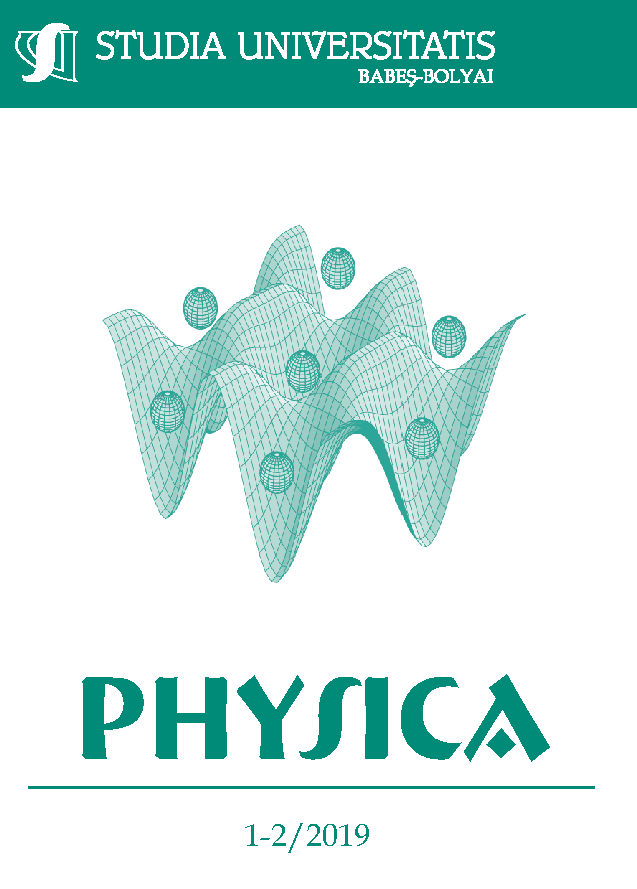EXPLORING THE BIOLOGICAL PROTECTIVE ROLE OF CAROTENOIDS BY RAMAN SPECTROSCOPY: MECHANICAL STRESS OF CELLS
DOI:
https://doi.org/10.24193/subbphys.2019.08Keywords:
Raman spectroscopy, mechanical stress, sea urchin eggs, carotenoidsAbstract
Carotenoids present a group of tetraterpenoid biomolecules which are well known for their physiological benefits through their remarkable radical scavenging activity and reactive oxygen species quenching. However, little is known about role of carotenoids in relieving mechanical stress. Hence, in this study, we exposed sea urchin fertilized eggs to mechanical stress in form of centrifugation and exploited the advantage of Resonance Raman scattering to probe if the carotenoid profile or their distribution would change after application of the stress. Silver nanoparticles were used ro probe the Raman signal of carotenoids near the cell surface and attempt to achieve SERRS conditions (Surface-enhanced Resonance Raman scattering). We have found that carotenoid concentration notably increased on the cell surface after centrifugation, indicating that carotenoids were mobilized in response to mechanical stress.References
S. Cintă Pinzaru, Cs. Müller, I. Ujević, M. M. Venter, V. Chiş, B. Glamuzina, Talanta, 187, 47 (2018).
S. Cintă Pinzaru, M. Ardeleanu, I. Brezeştean, F. Nekvapil, M. M. Venter. Anal. Methods-UK, 11, 800 (2019).
F. Nekvapil, S. Tomšić, S. Cintă Pinzaru, “Book of abstracts of the International conference Air and water components of the environment”, University Press, Cluj-Napoca, 2018, page 27.
S. Cintă Pinzaru, Cs. Müller, S. Tomšić, M. M. Venter, I. Brezeştean, S. Ljubimir, B. Glamuzina, RSC Adv., 6, 42899 (2016).
S. Cintă Pinzaru, Cs. Müller, S. Tomšić, M. M. Venter, B. I. Cozar, B. Glamuzina, J. Raman Spectrosc., 46, 597 (2015).
F. Nekvapil, “Master thesis: Određivanje sadržaja karotenoida hridinskog ježinca, Paracentrotus lividus uz pomoć Raman spektroskopije“, University of Dubrovnik, 2017. URL: https://repozitorij.unidu.hr/islandora/object/unidu:280 (Accessed 8. Nov 2019)
M. Tsuchiya, G. Scita, H-J. Freisleben, V. E. Kagan, L. Packer, Methods Enzymol., 213, 440 (1992).
F. Nekvapil, I. Brezeştean, S. Tomšić, Cs. Müller, V. Chiş, S. Cintă Pinzaru, Photochem. Photobiol. Sci., 18, 1933 (2019).
C. E. Boudouresque, M. Verlaque. Sea urchins: biology and ecology, 3rd edition. Dev. Aquacult. Fish. Sci., 38, 297 (2013).
G. Chizak, R. Peter, “The sea urchin embryo: biochemistry and morphogenesis“, Springer-Verlag Berlin, Heidelberg, New York, 1975, chapter 3.
G. S. Kopf, G. W. Moy, V. D. Vacquier, J. Cell. Biol., 95, 924 (1982).
M. Tsushima, T. Kawakami, M. Mine, T. Matsuno, Invertebr. Reprod. Dev., 32, 149 (1997).
N. Leopold, B. Lendl, J. Phys. Chem. B, 107(24), 5723 (2003).
J. M. Brooks, G. M. Wessel, Develop. Biol., 261, 353 (2003).
A. Rygula, K. Majzner, K. M. Marzec, A. Kaczor, M. Pilarczyk, M. Baranska, J. Raman Spectrosc., 44, 1061 (2013).
Downloads
Published
How to Cite
Issue
Section
License
Copyright (c) 2019 Studia Universitatis Babeș-Bolyai Physica

This work is licensed under a Creative Commons Attribution-NonCommercial-NoDerivatives 4.0 International License.






